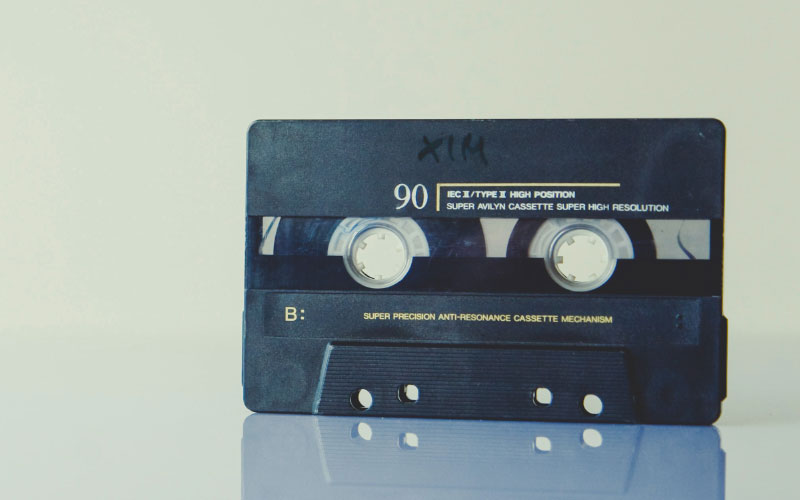How does a cassette tape work?

The cassette tape or simply cassette saved countless hours of recorded sounds, music and dialogue.
Small and compact but when inserted into a player delivered hi-fi tunes and music. But how did they work? Short answer – magnets.
More specifically, the process of Magnetic Recording. Which involves storing information electronically. It is present in broadcasting equipment and analogue systems such as VCR players.
The Cassette Tape
There two segments in a cassette tape. The recorder which is the device itself and the tape.
The tape is coated in magnetic particles- an oxide powder. This oxide is mixed with a binder, within a dust-free environment to attach it to the plastic film. The most important characteristic of this compound is that it is ferromagnetic.
Ferromagnetic material when exposed to a magnetic field is configured to match that field. In a recorder, the tape is passed along several magnetic heads. As the magnetic particles of the tape interact with the magnetic head, they are aligned to that corresponding field- matching the pattern of incoming sounds.
This process allows two things, the ability to:
- record any sound and save that recording within the cassette
- erase or record over any existing content
These two features contribute to the popularity of the cassette tape. Ease of use, configuration and to instantly record sounds.
Not all cassettes are the same
When we insert a cassette tape into the player, the electromagnetic head of the cassette moves from the sound waves recorded on the tape. This movement translates into electromagnetic waves which are then sent into speakers.
Since their official introduction by Philips in the 1960s, there have been several improvements and some are in use today:
Type 0 and 1 Ferric-Oxide Tape
The first and cheapest type of cassette tape. This format has been continuously improved on to include more evenly distributed magnetic particles.
Type 2 Chrome Tape
This innovation uses chrome within the tape, the ferric-oxide particles combine with the chromium dioxide and give the tape defined high frequencies, reduced noise i.e. a quieter background and becomes more receptive to details.
Type 4 Metal Tape
The only type of tape that uses metal particles instead of oxides. The innovation provides the highest sound quality out of the other tapes.
This makes it the most popular format for recording studios, artists and musical performances.
Final Notes
The cassette tape utilised the most advanced process at the time. Although considered by many now as an obsolete format, it still has an outstanding presence in today’s digitally inclined world.
The BBC credits their upcoming return with recent album releases by music artists- Lady Gaga, 5 Seconds of Summer and Yungblud.
But over digital mediums, why are cassettes still in use? Is it because of their physical value, collectability or association with nostalgia?
Who knows, at least you know how it works!
More from Happy Ireland
If you enjoyed this blog, click here to view more from us!
With Happy Ireland Productions, you can preserve your memories to last forever. Visit one of our partners to drop off your assortment of tapes, film, pictures and audio keepsakes. You’ll receive your DVD or digital copy with the original. Simple and Safe!
Your memories are priceless so why risk losing them.
Learn more about Happy Ireland Productions or Contact us for any inquiries